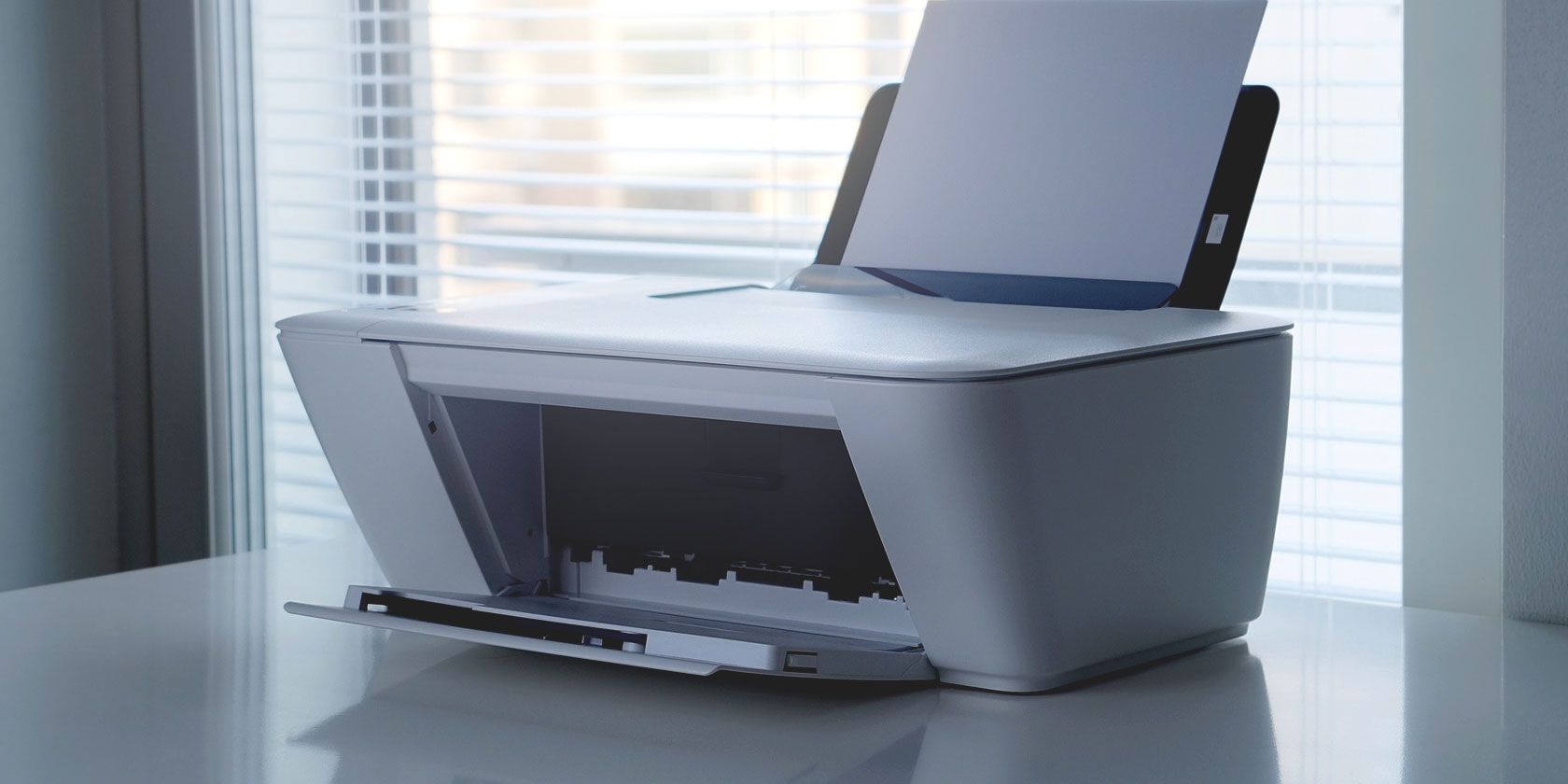Quick Links
Wireless printing is an extremely convenient feature of modern printers, but it doesn’t always run smoothly. Are you having problems connecting to your wireless printer? Perhaps you’re looking for a way to make a cabled printer accessible wirelessly?
Here’s everything you need to connect your printer to Wi-Fi and start printing on Windows 10.
What You Need to Know Before Connecting Your Printer to Wi-Fi
The hype would have you believe that wireless printing is as simple as unboxing a new Wi-Fi enabled printer, connecting it to your network and then hitting the print button from an application on your PC.
It is often not this simple.
Before you can print to your wireless printer from Windows, two things need to be done.
- The printer needs to be connected to your Wi-Fi network
- You need to detect and connect to the printer from Windows
Neither of these processes is particularly difficult, although they differ depending on the printer manufacturer.
Before proceeding, ensure your printer powered up, has ink, and at least a few sheets of paper loaded. Also, remember that while manufacturer instructions are generally the same across their own models, some differences may occur.
How to Connect a Canon Printer to Wi-Fi
To connect your Canon wireless printer to Wi-Fi:
- Press Settings
- Use the arrow button to select Device Settings
- Press OK
- Select LAN settings > OK > wireless LAN setup > OK
- Wait for network discovery
- Select the correct network and click OK
- When prompted, enter the password, then OK
Your Canon printer should now be connected to your wireless network. If prompted, print a test page. The IP address should be listed here, which you’ll need later.
How to Connect HP Printers to Wi-Fi
To connect a HP Deskjet, Officejet, and any other type of HP printer to Wi-Fi:
- Press Home
- Use the arrows to scroll down the menu to select Wireless
- Press OK
- Select Wireless Setup Wizard > OK
- Select the correct network, click OK, then enter the password
- Confirm the details, then OK for the printer to join the network
When ready, select Print to print a report, or Continue to complete the process. Make a note of the IP address when it is displayed.
How to Connect a Brother Printer to Wi-Fi
To get your wireless Brother printer online:
- Press the flashing Wi-Fi button
- Press Menu
- Press – (Down) to find Network then OK
- Next, select the first option, WLAN and click OK again
- Press – to select 2.Setup Wizard then OK
- In the next screen use the +/- (Up/Down) buttons to search for your wireless network
- Select the network with OK
- Enter the password using +/- to cycle through characters and OK to confirm each one (this takes a while)
- When prompted to Apply Settings select Yes (Up)
- Click OK to confirm
Make a note of the IP address when it is displayed.
Connecting to a Wireless Printer in Windows
With the wireless printer connected to your home network, you’re ready to find it in Windows and connect.
- In Windows 10, hit Windows key + I
- Go to Devices > Printers & scanners
- Click Add a printer or scanner
- Wait while the operating system searches
- When your device is listed, select it
- Follow the prompts to set up the printer and print a test page
You’re done.
If the printer isn’t listed, click The printer that I want isn’t listed to open the Add Printer dialogue. (You can also use Control Panel > Hardware and sound > Devices and printers > Add a printer.)
This method lets you add the printer by name or scan for it on your network. This last option probably won’t work if it hasn’t already. The easiest way is to use the printer’s IP address, which you should have already noted:
- Click Add a printer using a TCP/IP address or hostname
- Click Next
- Input the IP address in the Hostname or IP address field
- Check the Query the printer box
- Click Next again
-
Select the printer from the list using the Manufacturer and Printers panes
- At this point you can click Windows Update or Have Disk to install the device driver
- Click Next to install the driver automatically
- Enter a name for the printer and proceed with Next
- In the Printer Sharing screen choose Do not share this printer or enter sharing details as needed
- Hit Next
- Print a test page if necessary, then Finish to complete
With a successful test page print, you’re now ready to print from any Windows app.
Installation Problems? Try These Tips!
When a printer won’t install or connect correctly, the reason is usually simple. The problem is that working out exactly why the connection cannot be made can prove to be a drawn-out process.
Is the Printer on Your Network?
By default, the printer should appear in Windows Explorer, even if you’re not printing to it.
If not, check the printer is powered up. If it is, try the ping command from the Windows command line. To do this:
- Hit Windows + R
- Enter cmd and click OK
- Type ping followed by the printer’s IP address
- Hit Enter
If this doesn’t work, try restarting your printer, then restart your router. Still no change? It’s worth restarting Windows at this point as well.
Is Your Wireless Printer Out of Range?
If the printer only occasionally appears online, it could be out of range of your router.
You can check this by comparing its reliability when placed close to the router. Better results will indicate a printer that needs a permanent home within range of the router. Dead zones can result in no Wi-Fi reception in specific parts of your property, so avoid placement here.
Should moving the printer prove impractical, try a powerline adapter. These are available with Wi-Fi repeater functionality or can simply link your printer via Ethernet to the router via your home’s electric wiring.
Use a Different Driver
Often printers are compatible with drivers from older models. If you’re having difficulty installing the driver to use it wirelessly, consider finding a driver for a legacy model. It should be a similar printer—e.g., if you have a photo printer, try an older photo printer driver.
A Better Understanding of Wireless Networking Can Help
When setting up a wireless printer, you’re connecting the printer to your network, then printing from a PC. Understanding this basic two-step process can help you focus on the task.
With the printer up and running on your network, it isn’t only your PC that can print. Any device on your network can send documents and images to be printed.
About The Author

